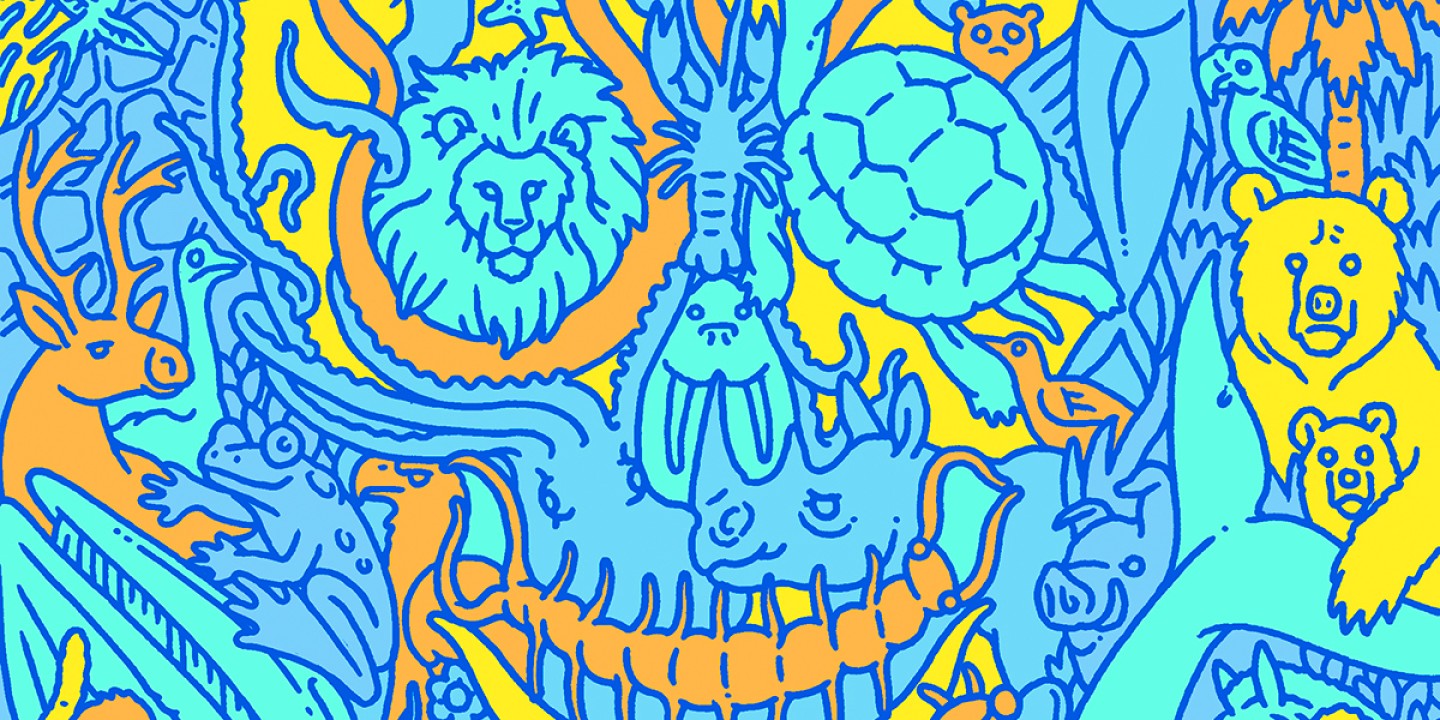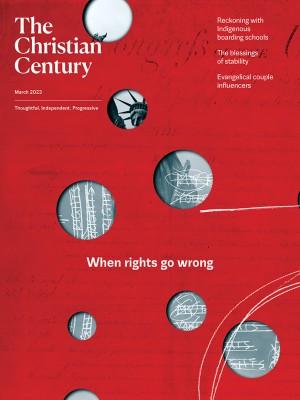Did God intend for Adam and Eve to live forever?
Maybe immortality is about more than not being dead.

There are few more rigorous theological spaces than the kitchen table with a four-year-old. On one particular occasion we were talking about creation and the garden of Eden and the arrival of death in the Fall. “So before that, everything lived forever?” my conversation partner asked. “The trees kept growing and there were more and more and more tigers? And what did the tigers eat? What did the T. rexes eat? Would people have just kept filling up everything? Where would it all go?”
As we talked, I imagined looking around and seeing trees pressed together and humans and elephants and bears and coyotes and roaches and mice and dogs and cherry trees and azalea bushes and dandelions—all slowly pressing together and then piling on top of one another. Millions. Billions. Billions of billions of living things that never die.
Read our latest issue or browse back issues.
“Well, it was just the humans who lived forever.” As soon as I said it, I knew I was wrong. Everything else lives and dies so that we don’t have to? When we interpret humanity’s relationship to creation, maybe our domination over creation isn’t our only misperception. Perhaps we miss the possibilities of our life when we believe human beings are intended to be exempt from death.
Our personhood, the body we speak of so confidently that was meant to live forever, is itself an arrangement of cells and tissues that are cycling through life and death. Our bodies are constantly undergoing changes, small transformations in our gradual development from infant to adult. Our bodies are no different and are connected to the cycles of life and death that are intrinsic to creation’s goodness. As Indigenous theologian Randy Woodley reminds us, “Death is simply another part of living.”
I have begun to wonder if living forever was really the Edenic ideal. Is it possible that we were all meant instead simply to live long lives filled with friends and companions? That we could see the children in our midst grow up and have children of their own? And that when our body is laid to rest we are surrounded by those who love us and in whom our life continues?
In so much of our language around sin and salvation, death looms as a monster, the consequence of disobedience. But we rarely ask what we mean by death—or by everlasting life. In Jesus’ resurrection, his body shows us that our bodies will matter. In Jesus’ resurrected body there is a likeness to who he was with the disciples. But he’s also different. His face sometimes unrecognizable from the friend they walked with. Appearing and disappearing from rooms. Recognition that only comes with teaching or a meal. This is surely the body of Jesus, but even his body and life have undergone a change, a transformation. Perhaps life everlasting is not the resurrection of my mid-30s self.
Change, transformation, death, cycles of renewal and cessation—these are all part of God’s creation. And this change is beautiful and good.
What resemblance does my 40-something self have to my three-month-old self? An Edenic ideal that sees an unchanging, immortal ideal humanity can’t help but attempt to freeze life around it, a human exceptionalism that clings to everlasting life as what it means to be with God but never quite asks what the nature of that life is. Maybe immortality is something more than not being dead.
And if this is true, we might find that notions of immortality and everlasting life are more than an undying body. In truth, our bodies and lives are always extending far beyond time and space. The tendrils of my life fly out into the world in the words I have written, in how my son cuts his grilled cheese, in the way I sit like my grandmother when I eat, in the lives of those I love or have simply encountered in brief moments.
Sometimes those resemblances are so clear in the faces of the ones we love. But other times we do not recognize them until the teaching, the eating, the way the bread is broken. There are so many ways we continue to live in this world—the death of our bodies may not be the end. This makes me wonder more and more about God’s warning to Adam and Eve not to eat of the tree of the knowledge of good and evil, for they will surely die.
Perhaps death is not the bodily death they imagine. I wonder if God’s warning is about loss: where once every tree nourished you and you could appreciate the variations, their limits and their beauty, after eating of the tree of the knowledge of good and evil every tree turns sour. Seeing what we do not understand makes us turn what is a gift into a burden. Death was not a condition of dying, it was a tragic way of living. But when the fear of death, the fear of losing our life, becomes the totality of what we are, it becomes so much easier to kill others to preserve ourselves, to justify the impoverishment of others so that we might be full.
Maybe death is not what we should fear. Without death we do not grow. Without death our creation accumulates and crowds and ultimately withers, because constant growth is not sustainable. Even death was in the garden, yes, even our deaths. And it was good.







